Perched on the shores of the Gulf of Trieste, Miramare Castle captivated me from the moment its white walls came into view against the blue Adriatic. This stunning Habsburg residence combines rich history with breathtaking natural beauty, making it one of Italy’s most enchanting destinations.
Visitors can explore the castle’s historic interiors, wander through free gardens filled with exotic plants, and enjoy spectacular views of the Adriatic Sea all in one unforgettable visit.
The castle tells the tragic love story of Archduke Maximilian of Habsburg and his wife Charlotte, adding a layer of romance to its already impressive architecture. During my visit, I was struck by how accessible this magnificent place is – just a short bus ride from central Trieste on routes 6 or 36.
The carefully designed rooms maintain their 19th-century charm, while the surrounding park creates a perfect backdrop for photos or a peaceful afternoon stroll.
I recommend planning at least half a day to fully appreciate both the castle interiors and the beautiful grounds. The gardens alone are worth the trip, with their mix of Mediterranean and exotic plants, decorative elements, and hidden pathways that lead to stunning sea viewpoints.
Whether you’re a history buff, architecture lover, or simply seeking a beautiful spot to relax, Miramare Castle offers a perfect blend of culture and natural beauty that shouldn’t be missed on any Trieste itinerary.
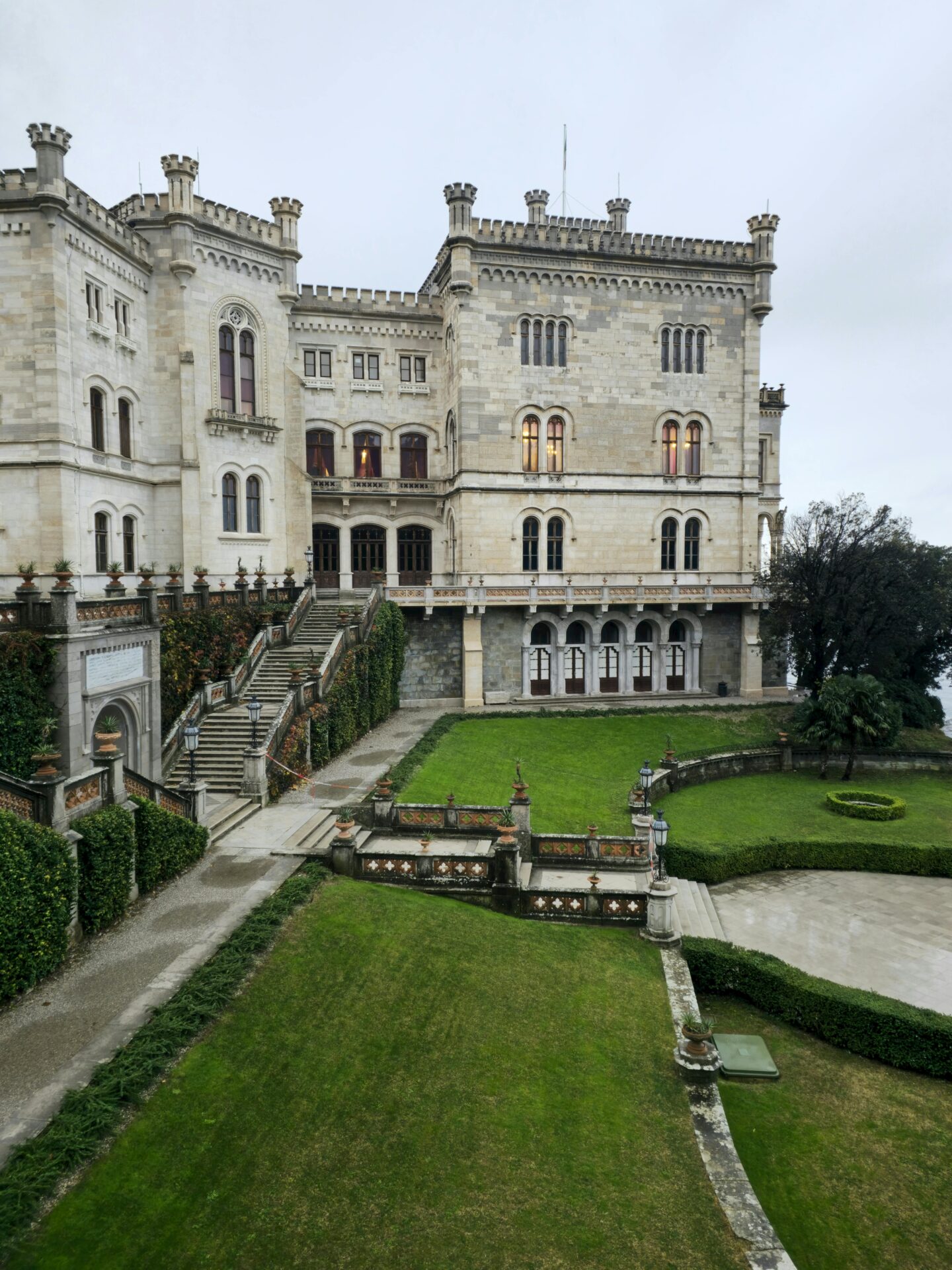
History and Legacy of Miramare Castle
Miramare Castle stands as a testament to royal ambition and architectural excellence on the shores of the Adriatic Sea. This stunning white castle holds a fascinating story that begins with a Habsburg archduke’s dream and continues today as an important cultural landmark.
Emperor Maximilian’s Vision
Miramare Castle was built between 1856 and 1860 by Archduke Ferdinand Maximilian of Habsburg, the younger brother of Emperor Franz Joseph I of Austria. I was amazed to learn that Maximilian personally supervised the construction, pouring his heart into creating this magnificent seaside residence.
He fell in love with the rocky promontory of Grignano during his travels and envisioned a romantic dwelling that combined Austrian, German, and Italian architectural styles.
The castle’s name “Miramare” means “view of the sea,” reflecting Maximilian’s deep passion for the ocean from his naval career. Tragically, Maximilian enjoyed his dream home for only a few years before accepting the position of Emperor of Mexico in 1864. His Mexican adventure ended in execution in 1867, casting a shadow over the castle’s early history.
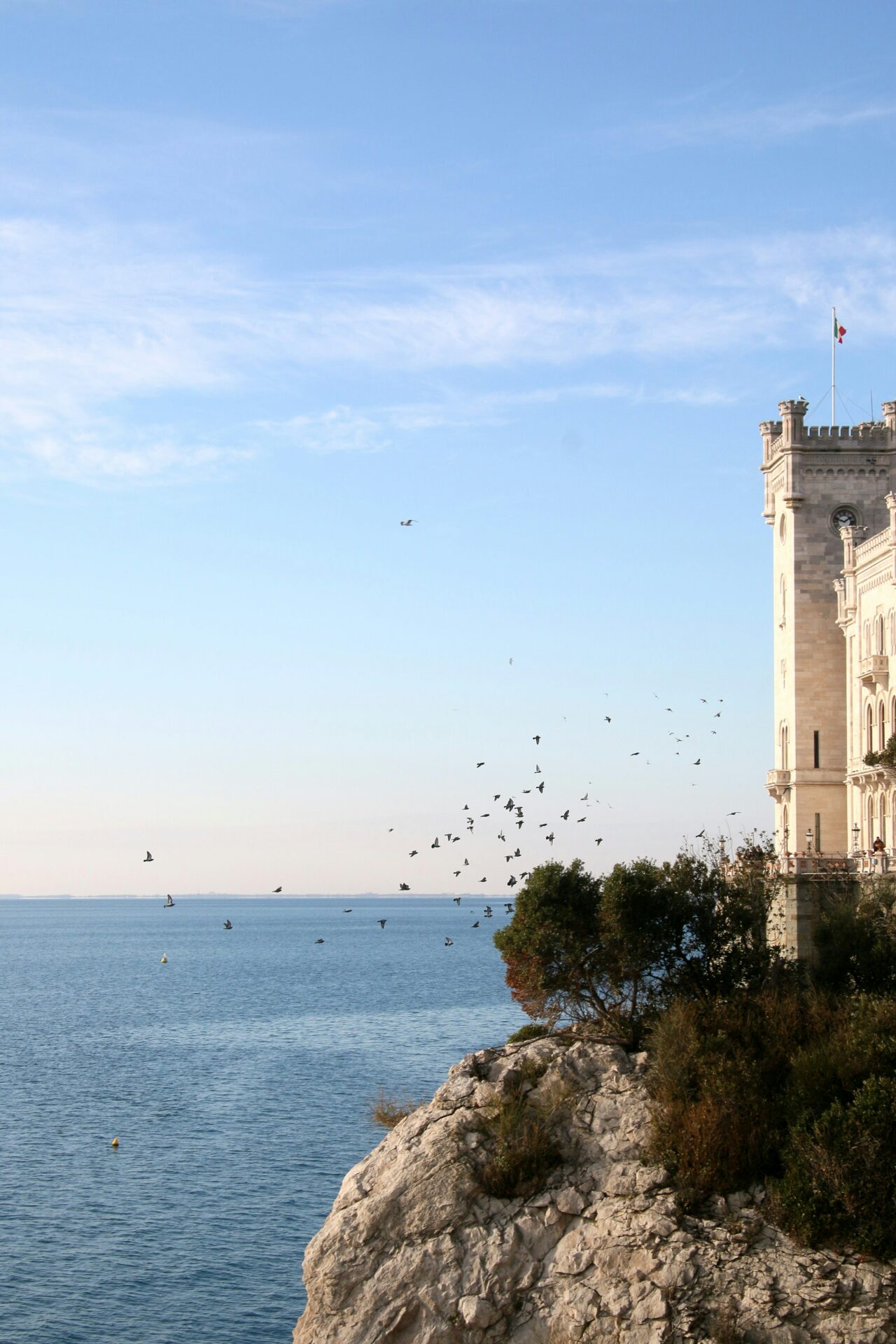
UNESCO World Heritage Status
While exploring Miramare, I discovered its remarkable preservation earned it special recognition. The castle and its surrounding 54-acre park were designated as part of the UNESCO World Heritage tentative list in 2006. This prestigious status acknowledges the site’s exceptional cultural significance and architectural value.
The recognition helps protect Miramare’s:
- Original furnishings and decorations (largely unchanged since the 19th century)
- Historical gardens featuring rare botanical specimens
- Maritime significance as a symbol of Trieste’s connection to the Adriatic
Today, Miramare Castle attracts thousands of visitors yearly as one of Italy’s most popular museums. The preservation efforts ensure future generations can appreciate this stunning example of 19th-century royal architecture and its gorgeous seaside setting. Walking through its halls, I felt transported back to the time of the Habsburg monarchy.

Exploring the Gardens of Miramare
The gardens of Miramare Castle are a verdant paradise stretching over 22 hectares along the Adriatic coast. I was amazed by how the carefully designed landscape perfectly complements the fairytale-like castle while offering stunning sea views from almost every corner.
Landscaping Masterpieces
When I wandered through Miramare’s gardens, I immediately noticed how they blend Italian and English garden styles. The castle’s original owner, Archduke Ferdinand Maximilian, personally supervised their creation in the 1850s, transforming bare karst rock into this lush paradise.
The gardens feature elegant pathways that wind through meticulously arranged terraces. I loved discovering the small ponds, ornamental fountains, and classical statues hidden throughout the grounds.
Don’t miss the beautiful pavilions scattered across the park – they offer perfect photo spots and shelter from the Mediterranean sun. The most impressive feature might be the garden’s layout, which creates breathtaking viewpoints overlooking the Gulf of Trieste.
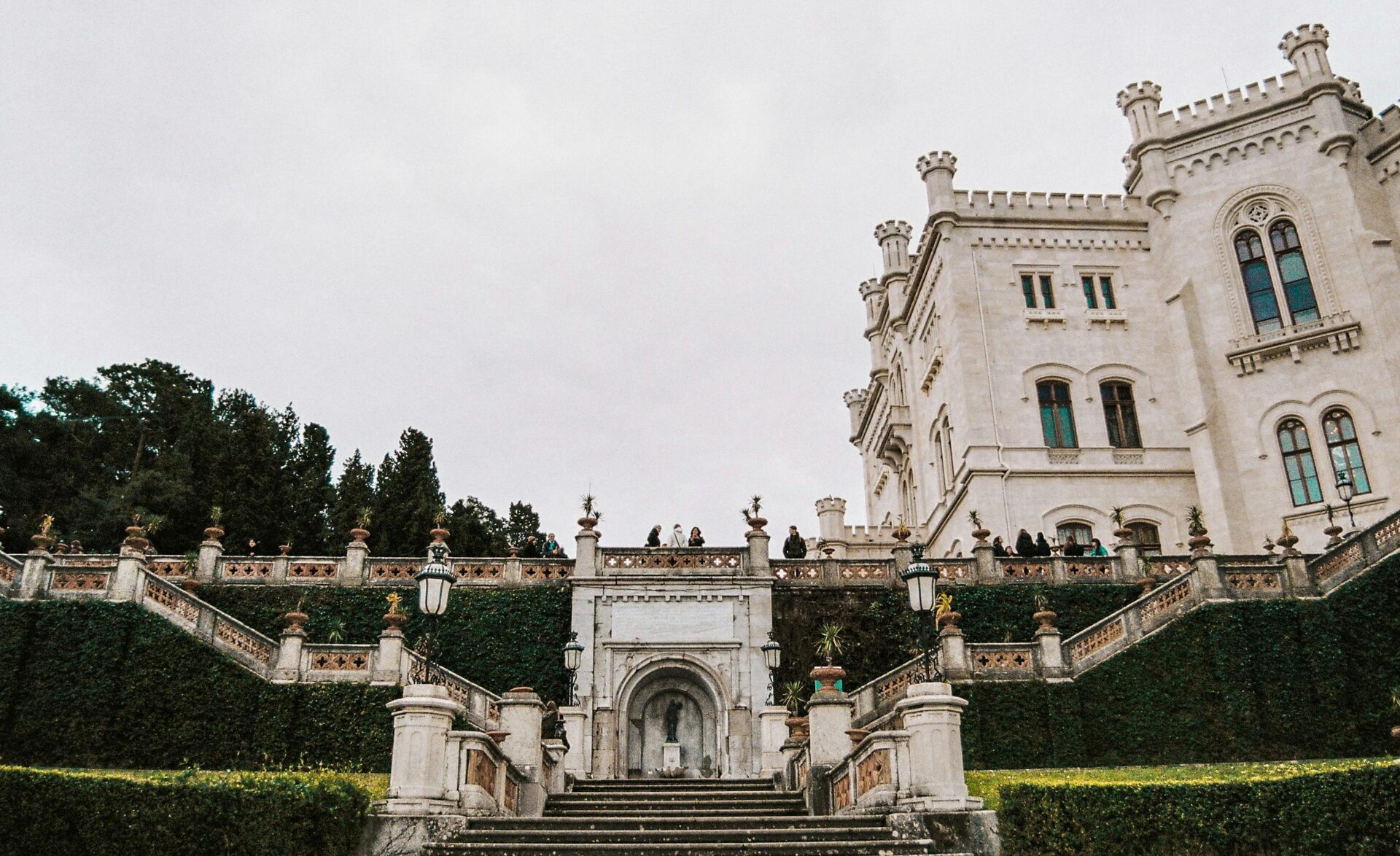
Flora and Fauna Highlights
What makes Miramare’s gardens truly special is the incredible variety of plants. Maximilian was passionate about botany and imported exotic species from around the world. Cedar trees from Lebanon, sequoias from California, and rare tropical specimens all thrive here.
I spotted vibrant flower beds that change with the seasons – spring brings colorful tulips while summer showcases fragrant Mediterranean herbs. The garden is also home to a rich collection of rare camellias and rhododendrons.
The coastal position creates a unique microclimate where both Alpine and Mediterranean species flourish side by side. Listen for birdsong as you walk – the gardens provide habitat for numerous bird species and small wildlife.
For plant lovers, I recommend visiting in April or May when most flowers are in spectacular bloom.
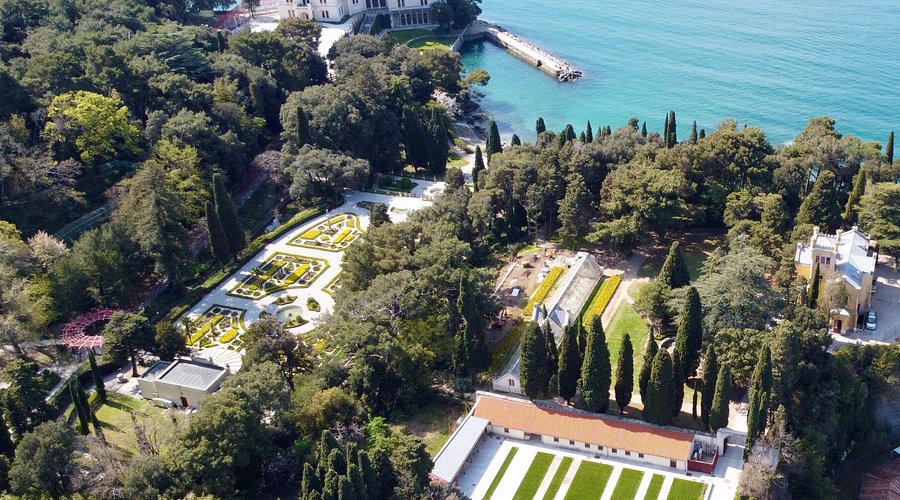
The Interior Elegance of Miramare Castle
Stepping inside Miramare Castle reveals a world of Habsburg luxury that transports visitors back to the 19th century. The meticulously preserved rooms showcase the refined taste of Archduke Maximilian and his wife Charlotte of Belgium.
Historical Rooms and Artifacts
The castle interior features numerous rooms decorated with luxurious furniture and priceless artwork. I was particularly impressed by the crystal chandeliers that hang from ornate ceilings, casting a warm glow across polished wooden floors. Maximilian’s study maintains its original layout, complete with his personal books and writing desk.
The bedroom chambers display elegant textiles and period furnishings that reflect the aristocratic lifestyle of the era. Many treasures that belonged to the royal couple remain on display, including porcelain collections, silverware, and family portraits.
The throne room stands as the most magnificent space, with its rich red damask wall coverings and gold accents. Naval motifs appear throughout the décor, honoring Maximilian’s background as an admiral.
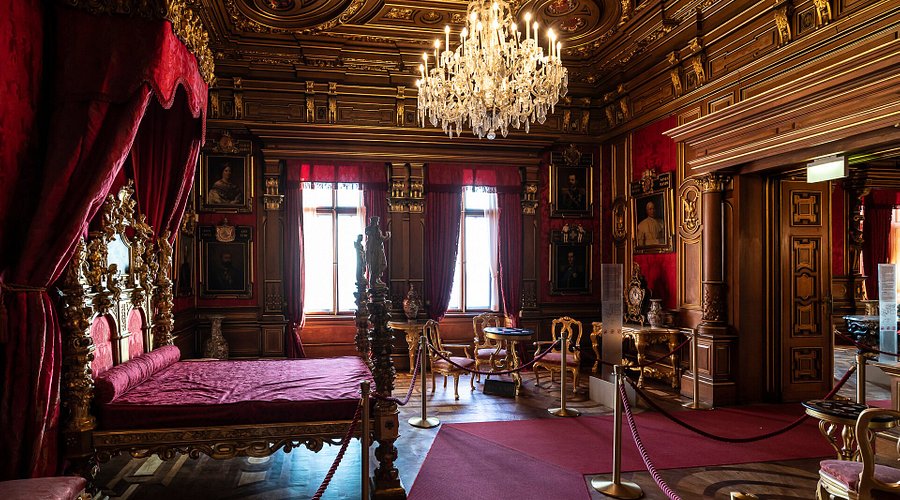
Preservation Efforts and Museum Collections
The castle functions today as a museum dedicated to preserving this important piece of cultural heritage. Conservation teams work continuously to maintain the delicate fabrics, paintings, and woodwork throughout the building.
I noticed detailed information panels in each room that explain the historical significance and original functions of the spaces. The museum has done an excellent job balancing preservation with accessibility.
Special collections rotate through dedicated gallery spaces, often featuring Habsburg-era artifacts or maritime objects connected to Trieste’s naval history. These temporary exhibitions provide fresh perspectives on each visit.
Photography is permitted in most areas, though flash is prohibited to protect the sensitive materials. Audio guides are available in multiple languages to enhance your understanding of the castle’s cultural significance.
Breathtaking Views and Panoramas
Miramare Castle’s position on a rocky promontory offers some of the most spectacular vistas in all of Trieste. The strategic location provides visitors with sweeping views that combine natural beauty with historical significance.
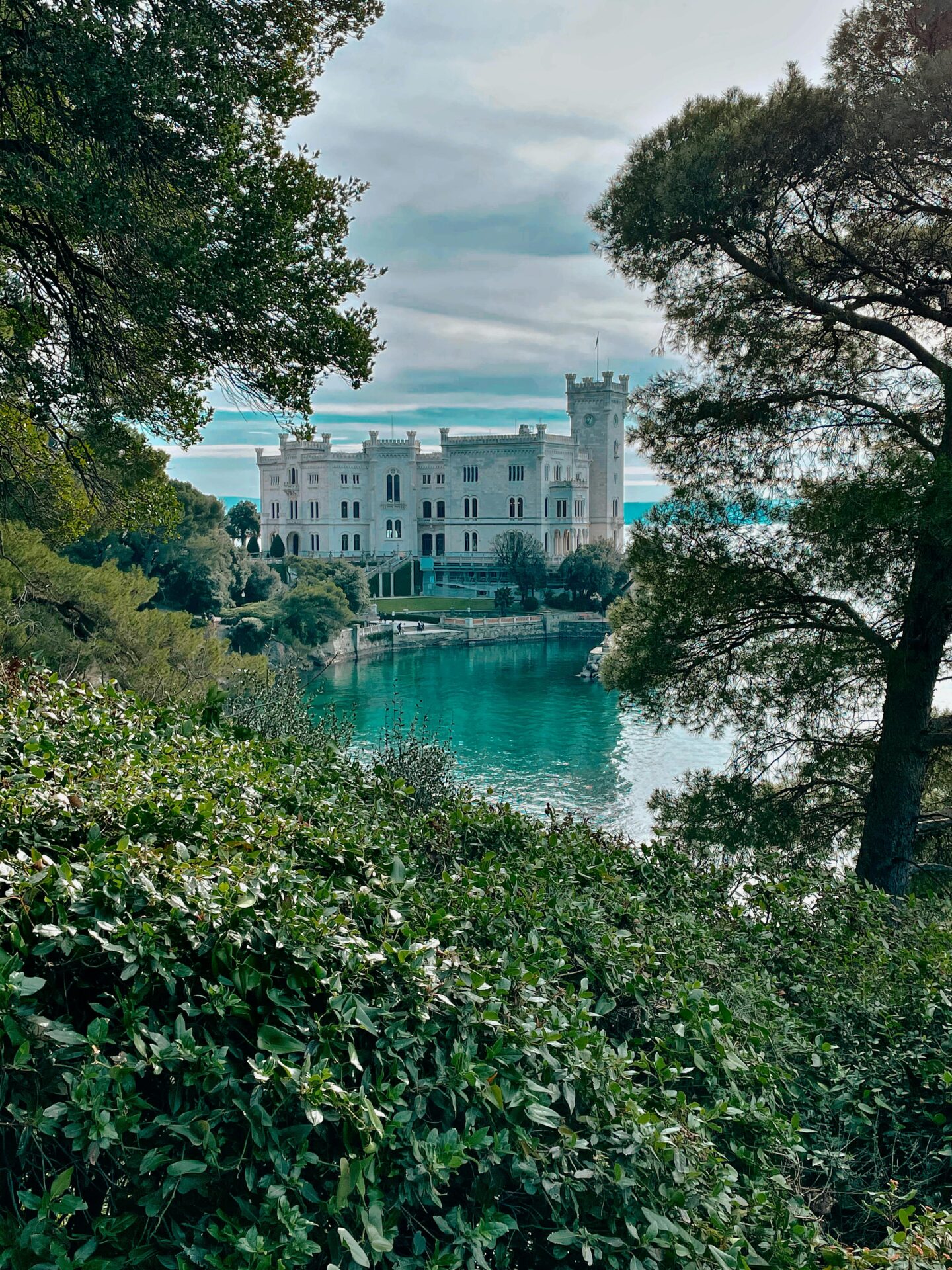
Gulf of Trieste and Adriatic Sea
The castle’s windows and terraces frame stunning views of the Gulf of Trieste, creating a perfect backdrop for photos. I spent nearly an hour just gazing at the deep blue waters of the Adriatic Sea stretching to the horizon. The changing colors of the sea throughout the day create a mesmerizing effect.
On clear days, you can see all the way to the Slovenian and Croatian coastlines. The contrast between the azure waters and the white limestone of the castle creates a magical Mediterranean scene.
Morning visits offer the calmest seas and best lighting for photographs. Sunset is equally breathtaking, with golden light washing over the castle walls as the sun dips into the Adriatic.
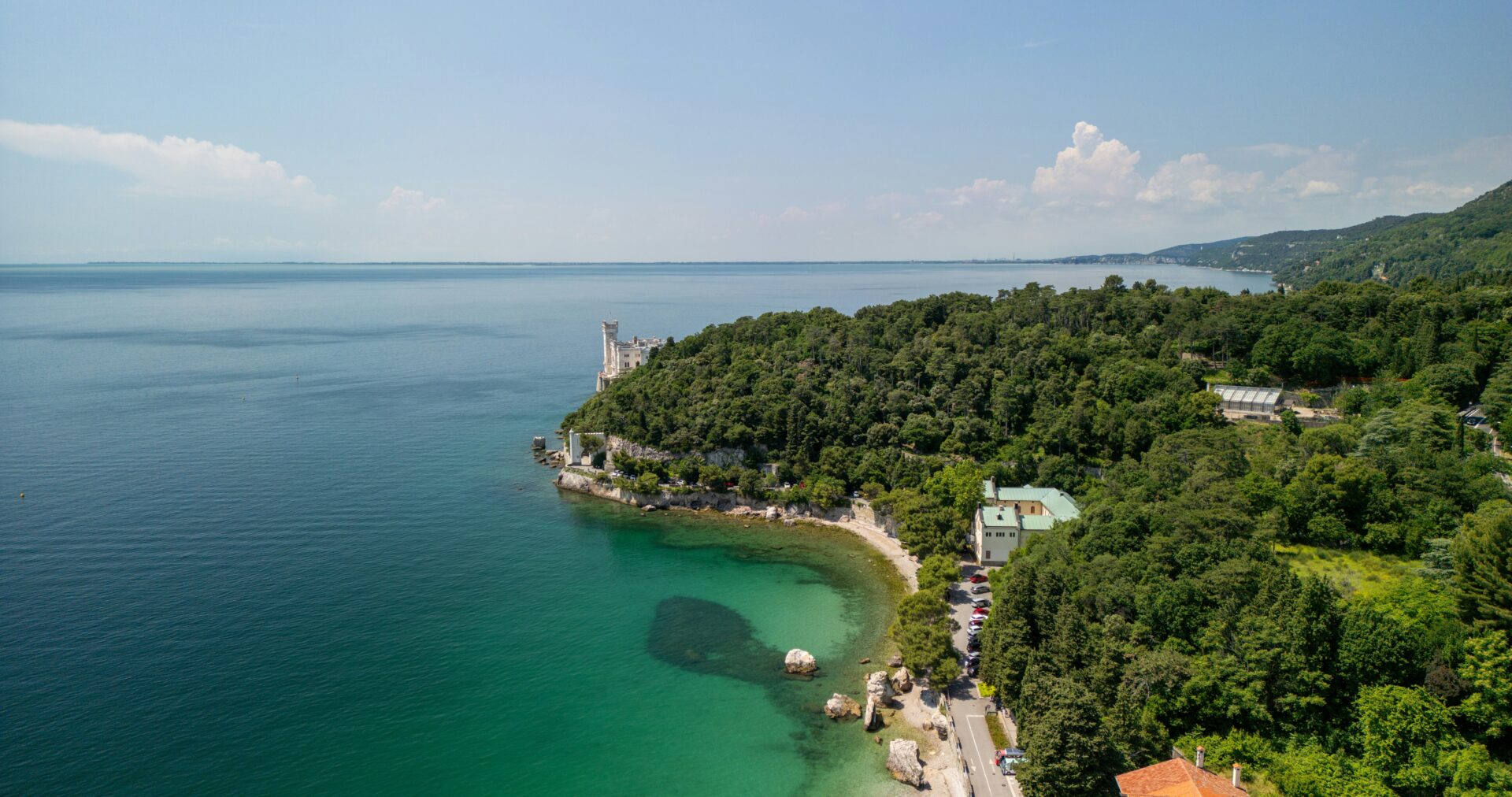
Panoramic Vantage Points
The castle grounds feature several perfect spots for taking in the panoramic views. My favorite is the small terrace on the castle’s second floor, which provides a 180-degree vista of the coastline.
The central tower offers the highest vantage point, though access may be limited during busy periods. From here, I could see not just the sea but also the surrounding hills and parts of Trieste’s cityscape.
Don’t miss the viewpoint at the eastern edge of the gardens where ornate benches invite you to sit and absorb the scenery. The carefully planned garden paths lead to several hidden lookout points worth discovering.
For photography enthusiasts, the morning light casts beautiful shadows across the castle façade while illuminating the Gulf of Trieste in the background.
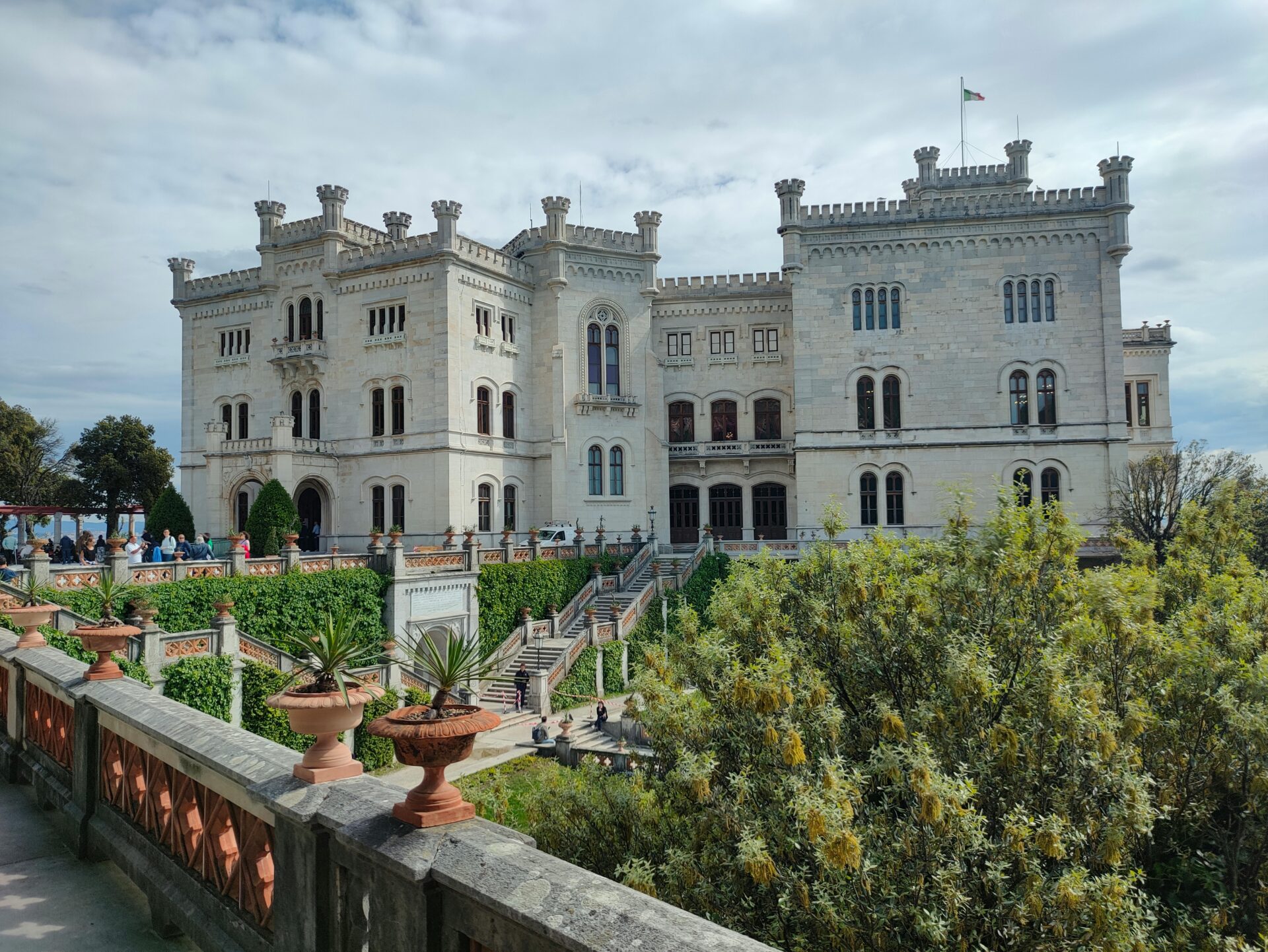
Visitor Information and Travel Tips
Planning your visit to Miramare Castle requires some preparation to make the most of your experience. Here’s what you need to know about timing your visit and where to stay and eat nearby.
Best Time to Visit
I’ve found that visiting Miramare Castle during spring (April-May) or fall (September-October) offers the perfect balance of good weather and smaller crowds. Summer brings more tourists, especially in July and August, when the wait times can get quite long.
The castle opens from 9 AM to 7 PM in summer, with shorter hours in winter. Weekday mornings are typically less crowded than weekends.
I recommend booking tickets online to avoid waiting in line, especially during peak season.
For the gardens, which are free to enter, early morning provides the best light for photos and a more peaceful experience. The gardens stay open year-round, making them a great option even on days when the castle interior might be closed.
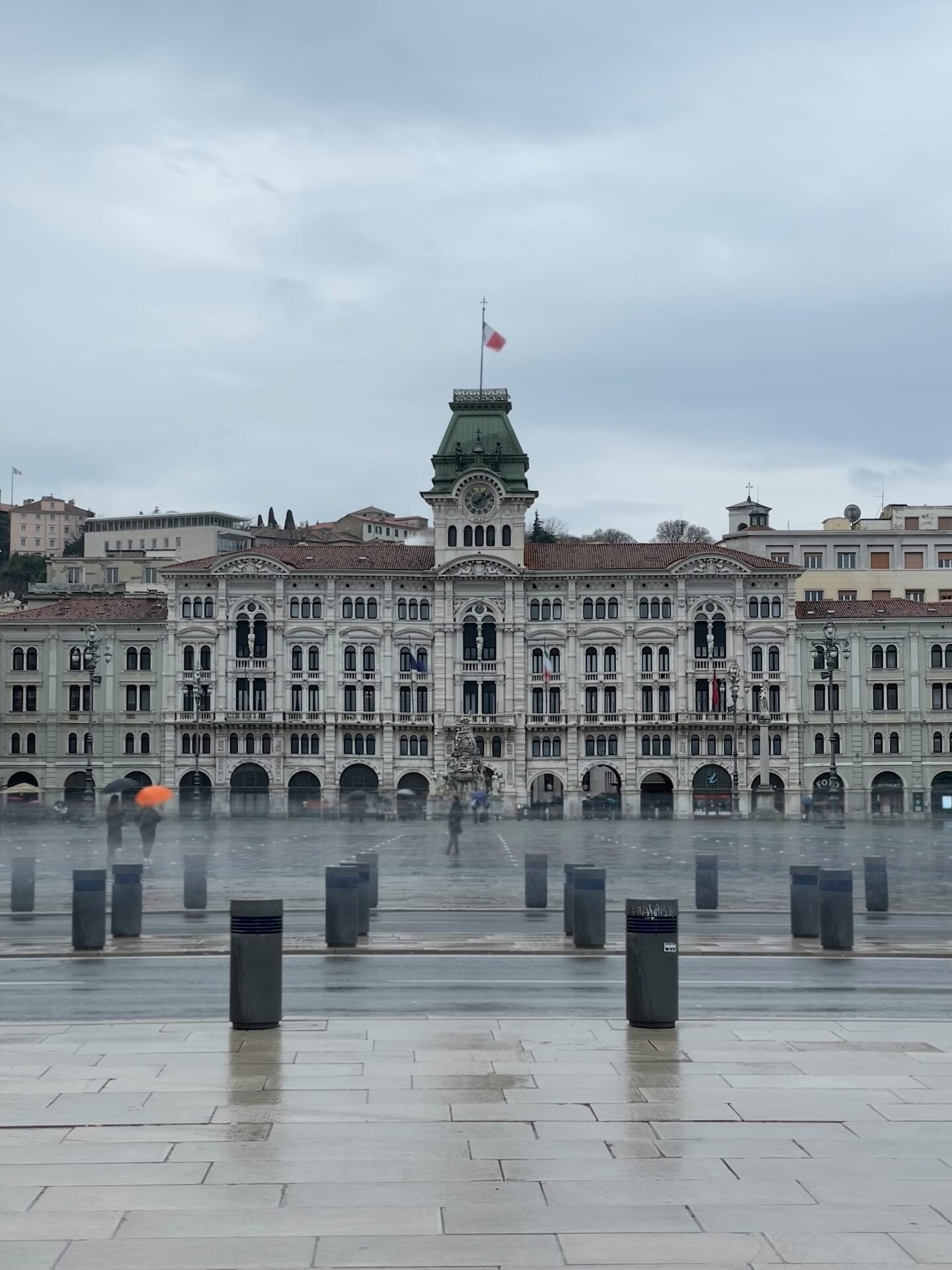
Accommodation and Dining Options
I stayed in Trieste during my visit and found it to be the perfect base. The city offers accommodations for every budget.
You can find luxury hotels like the Savoia Excelsior Palace and more affordable options like Hotel James Joyce.
Venice Hotels are another option if you’re planning a longer Italian trip, though they’re about 2 hours away by train. For something closer, small boutique hotels near Miramare offer stunning sea views.
For dining, the castle has a small café perfect for light refreshments. In Trieste, I enjoyed waterfront restaurants serving fresh seafood and local Friulian cuisine. Don’t miss trying local wines like Vitovska or Malvasia with your meal!
Small restaurants in Grignano, the village near the castle, offer authentic local food at reasonable prices compared to more touristy spots.

